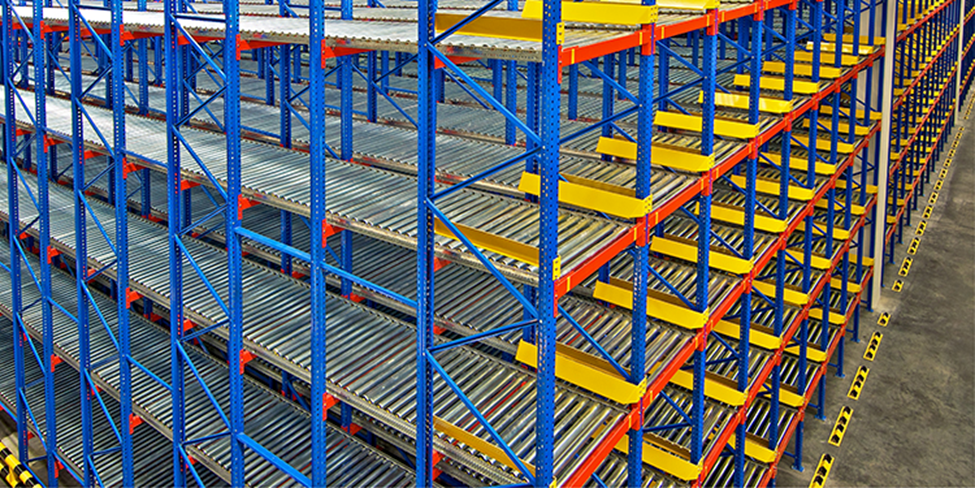As the demand for frozen and refrigerated goods continues to increase, the importance of efficient and safe cold storage facilities has never been more apparent. At the heart of these temperature-controlled warehouses, we have racking systems.
These sturdy structures not only hold our favorite frozen treats but also play a vital role in maintaining the integrity of perishable items. In this blog post, we’ll go into the world of cold storage racking systems and explore the key considerations for their installation.

Understanding Cold Storage Environments
Cold storage facilities are a unique breed, with temperatures ranging from a balmy 40°F (4°C) for refrigerated goods to a bone-chilling -40°F (-40°C) for frozen items. These extreme conditions pose a challenge for both the equipment and the personnel working in these environments.
Racking systems must be designed to withstand constant exposure to cold, moisture, and potential icing.
Choosing the Right Racking System
When it comes to selecting a racking system installation for your cold storage facility, there are several options to consider. Each type of racking has its own advantages and is suited for different operational needs.
- Pallet Racking: This is the most common type of racking used in cold storage. It allows for straightforward access to individual pallets, making it ideal for facilities with frequent product turnover. You can quickly load and unload pallets, which helps maintain efficiency.
- Drive-In Racking: If maximizing storage density is your goal, drive-in racking might be the way to go. This system allows multiple pallets to be stored deep in a single lane, which is perfect for items that are stored in bulk and have a longer shelf life. Just remember, this system operates on a last-in, first-out (LIFO) basis.
- Push-Back Racking: This option strikes a balance between storage density and accessibility. Push-back racking allows you to store pallets on inclined rails, so when you load new pallets, they push the older ones back. This system is great for optimizing space while still providing relatively easy access to your inventory.
Preparing for Installation
Before the racking system installation process begins, it’s essential to ensure that your facility is ready to accommodate the new racking system. This includes preparing the floor and ensuring that it is level and capable of supporting the weight of the loaded racks.
A solid foundation is crucial for stability. You should also consider the layout of your facility. Think about factors such as aisle width, ceiling height, and the flow of traffic. A well-planned layout not only improves efficiency but also enhances safety by reducing congestion and allowing for easy access to products.
Safety First
Safety should always be the top priority when racking system installation in a cold storage environment. The extreme temperatures can pose risks, and it’s essential to take precautions. Make sure your team is equipped with proper personal protective equipment (PPE), such as insulated gloves and boots, to protect against the cold.
Additionally, it’s crucial to follow all relevant safety regulations and guidelines, especially those set forth by OSHA and ANSI/RMI.
Installation Best Practices
When it comes to racking system installation in a cold storage facility, it’s important to work with expert professionals who understand the unique challenges of these environments. A reputable installation company will have the knowledge and expertise to ensure that your racking system is installed correctly and safely, decreasing the risk of accidents or damage to your facility.
Communication is key during the installation process. Make sure that everyone included understands their roles and responsibilities. This coordination helps prevent mistakes and ensures that the installation goes smoothly.
Maintenance and Inspection
Once your racking system is installed, it’s essential for regular maintenance to make sure its longevity and safety. Regular inspections should be part of your routine. Look for signs of damage or wear, such as bent uprights or loose connections. Addressing these issues promptly can prevent more significant problems down the line.
Keeping the racking system clean is also vital. In cold storage, ice can build up on racks, which can compromise their structural integrity. Regular maintenance will help keep your racking system in top shape.
Training Your Team
Proper training for your personnel is essential in maintaining a safe and efficient cold storage environment. Make sure your team is well-versed in safe handling practices, including how to operate forklifts and other equipment used in the facility. Regular training sessions allow warehouses to reinforce safety protocols and keep everyone updated on best practices.
Consider implementing a buddy system where more experienced employees’ mentor newer team members. This approach not only fosters a culture of safety but also builds teamwork and camaraderie among staff.
Conclusion
Racking system installation in a cold storage facility requires careful planning, attention to detail, and a commitment to safety. Working with expert professionals and following best practices helps cold storages ensure that their racking system is installed correctly and efficiently, helping to keep your facility running smoothly and your products safe.
Upright Installations understand the unique challenges of cold storage environments. Its team of professionals provides high-quality racking solutions that meet our clients’ specific needs. From pallet racks to steel shelving, cantilever racks to mezzanines, and carton flow racks, it provides a wide range of products made to withstand the rigors of cold storage. Services include delivery, installation, removal, layout, permitting, and rack refurbishing.

